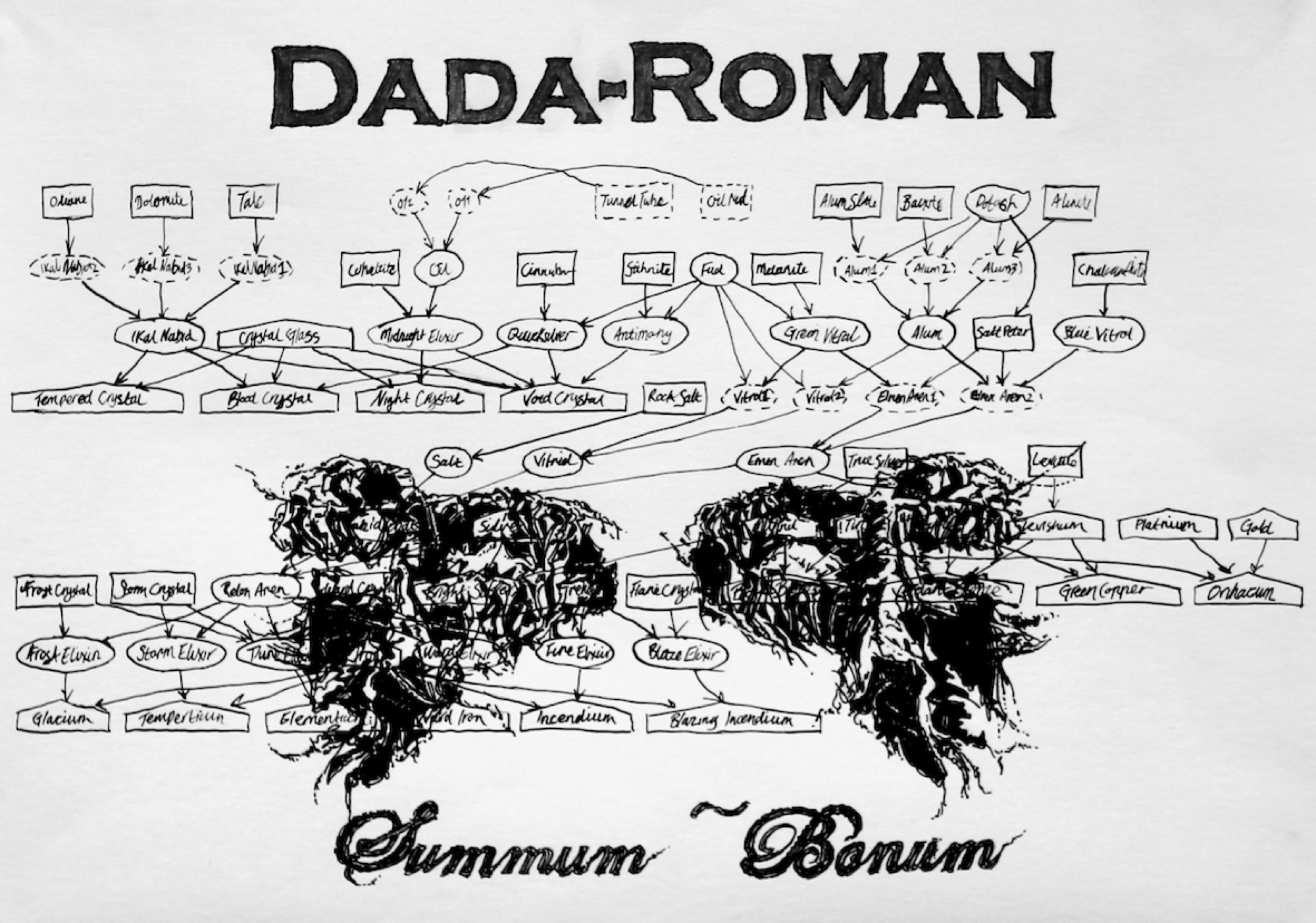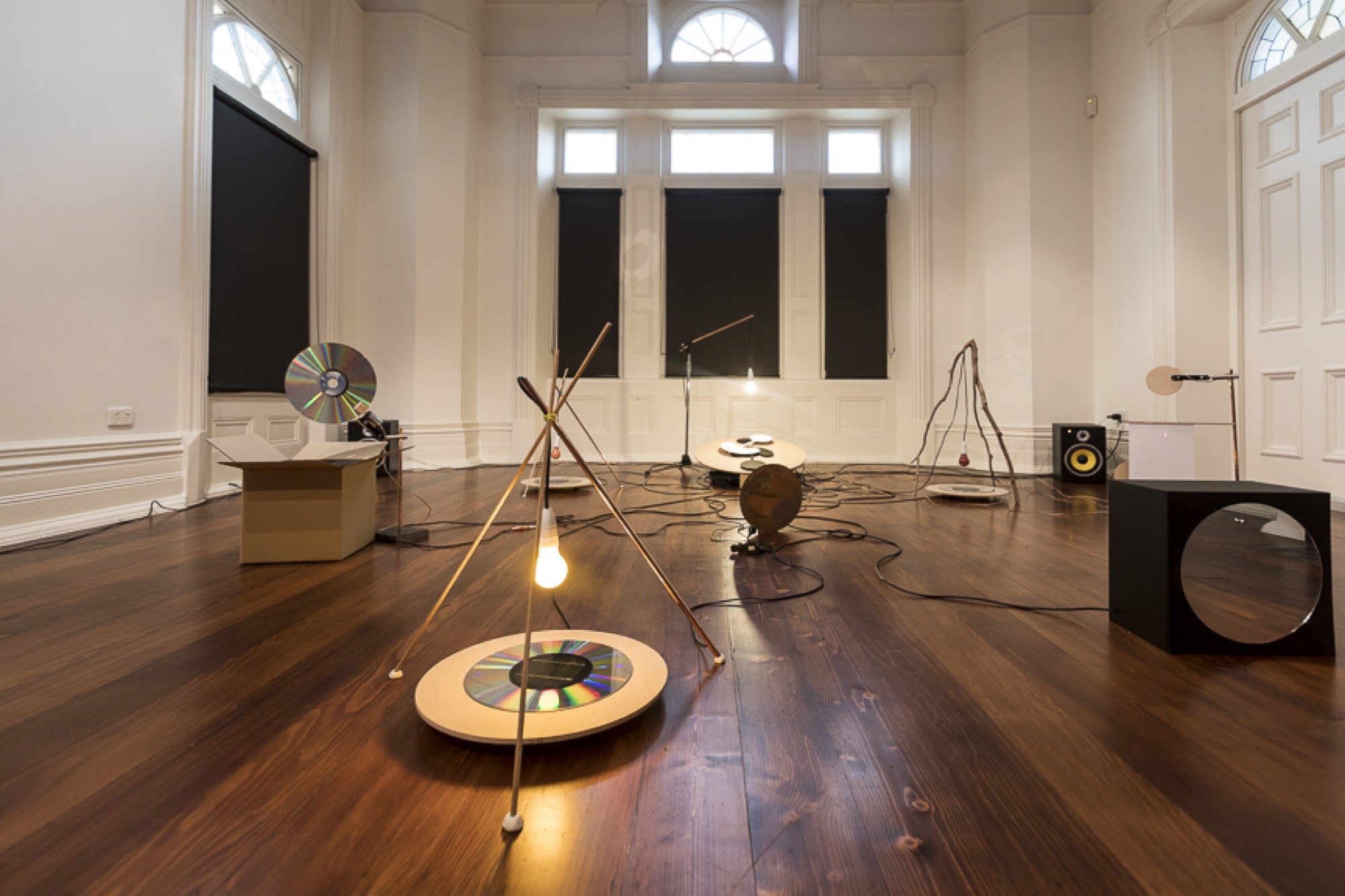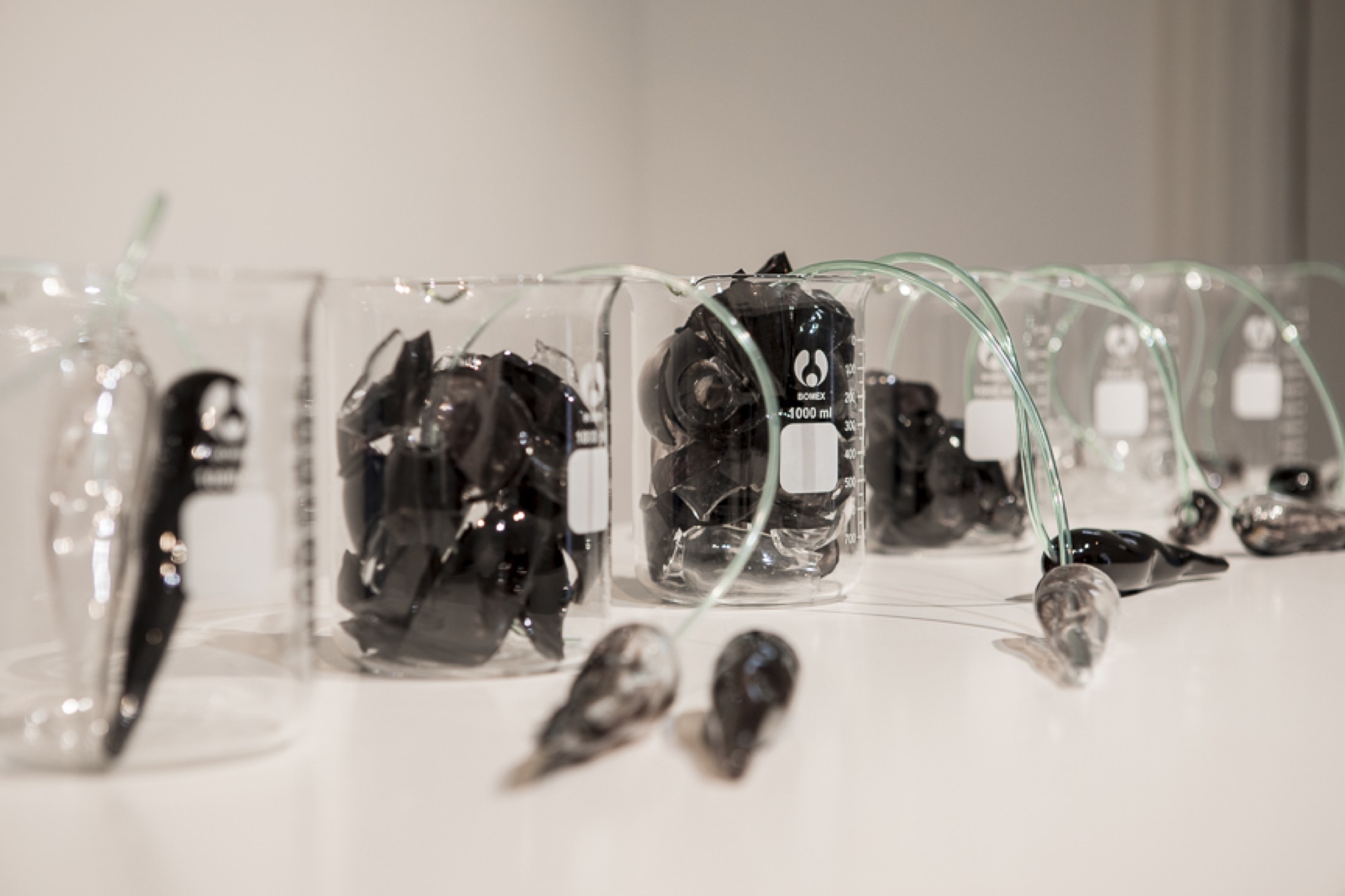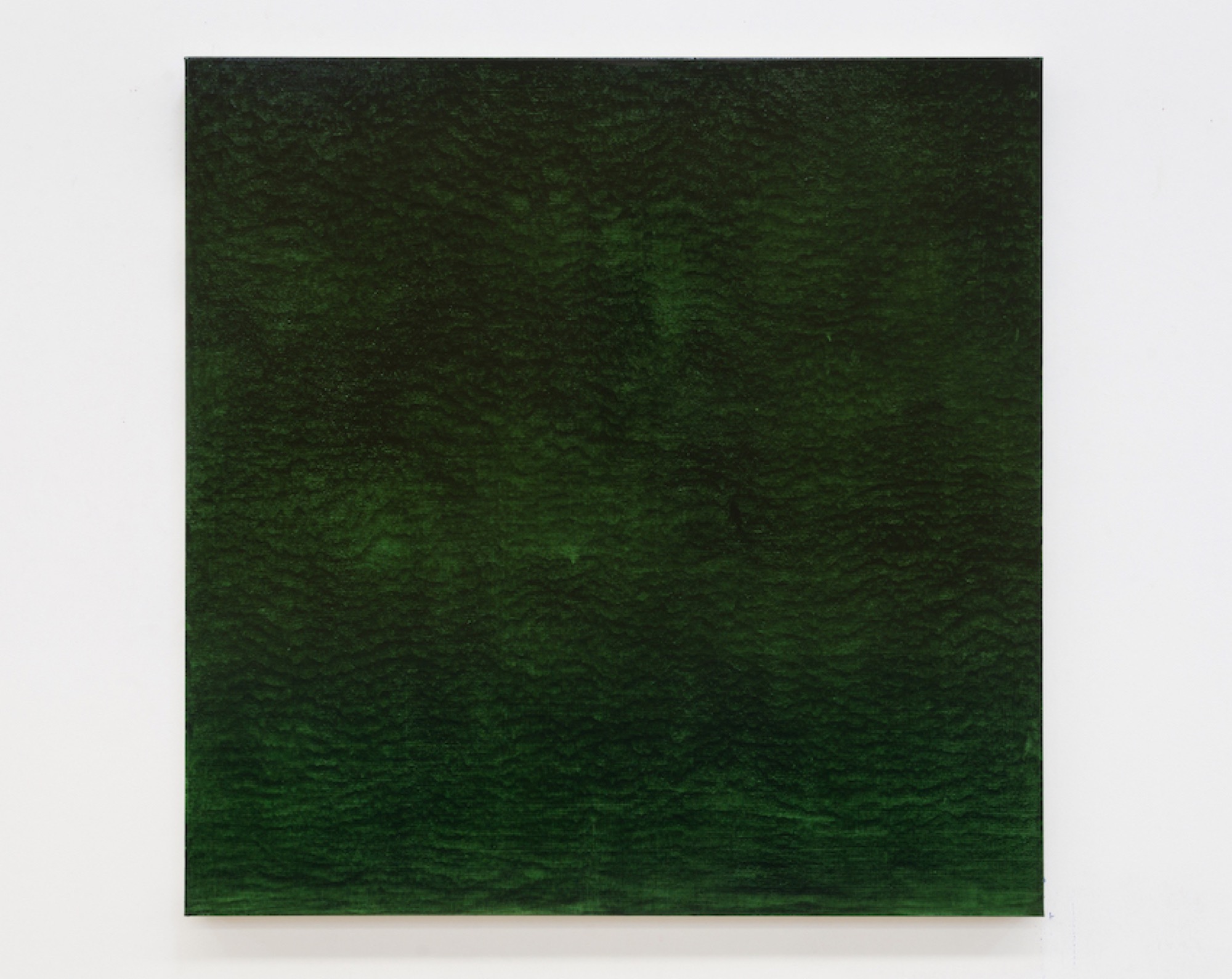Prima Materia
Elyssia Bugg
Honey, ore, vinegar, lead, venom, urine and lye. These are among some of the fifty or so elements used in Martin Ruland the Younger's 1612 text, Lexicon Alchemiae Sive Dictionarium Alchemistarum, to describe the concept of prima materia. Translating from Latin as “first matter”, prima materia is a recurring, elusive object of alchemical and philosophical research. It is also, in name, one of the current exhibitions inhabiting the stately rooms of Bundoora Homestead. That Ruland employed so many different similes in attempting to articulate what prima materia is indicates that the concept may be inherently inexplicable. This would explain why curator Emily Jones has chosen to focus the exhibition less directly on prima materia itself, and more on the historical, scientific and occult practices that the term's alchemical origins evoke. Yet of an exhibition that seems to centre the transmutable and transformative, it might still be worth asking where, if at all, amongst or within such works, the pure substance of the exhibition's namesake may be realised.

This question was raised initially for me on encountering Zilvester's work in the first room of the exhibition, as what is striking is not the purity of the objects, but the mark of their manipulation. An ongoing collaboration between Sharon Goodwin & Irene Hanenbergh, Zilvester sees the work of art become a vessel for the blending of the two parties' at times disparate streams of consciousness. This is apparent atop Table of Moresnet (2016). Looking to be very much in its element at the centre of one of the homestead's ornate rooms, Table of Moresnet consists of an oval dining table carved with eddying imagery that looks to be the product of sustained notebook doodling. This practice of impressing meandering thought into objects is mirrored on the room's mantlepiece in Alamy (2017-18): a collection of glassware, some cracked, some upturned, but all etched with the same vocabulary of swirling text and images. The pictorial content of the two works is drawn from eclectic sources spanning ancient mythology, Mad magazine, astrology, biblical imagery, the TV show Vikings, and the Heaven's Gate UFO cult. Taken individually, these references amount to little more than signifiers of various practices and institutions that seek to make sense of the world. Yet amassed and unified as they are across the objects and the accompanying drawings throughout the gallery, the images form in total an impression of thought as it moves between associations, objects and individuals.

As is the case with Zilvester's barrage of images, many of the works in the show seem to operate according to some unseen logic. Consequently, the exhibition appears to invite the viewer to perform the alchemist's work in unearthing the elemental, working backwards from what is apparent in order to ascertain how it has come into being, and what the implications of this might be. The pleasure of this undertaking is distilled in Alicia King's The Future of Nature (2018). Presented on a plinth behind plexiglass, the work appears on first glance to be a mineral, oozing dark glistening goo and sprouting bristly tufts of moss. However, closer inspection reveals the seemingly organic moss-like substance to be constituted of considerably more inorganic magnetised iron filings. The composition of King's work subsequently manages to somewhat miraculously give metal the appearance of an organism that is porous, alive and soft to the touch.
A similar material effect is used to different ends in Vittoria Di Stefano's The Bride's Room (2019). Situated on the floor of one of the homestead's larger rooms, Di Stefano's work is comprised of a checkerboard of mirror and tile. Atop this grid, an array of abstract sculptures made of soap flakes and salon wax form a recognisably modernist rhythm of splodges, dots and dashes. However rather than the brash, masculine-coded gestures associated with much of the 20th-century avant-garde, Di Stefano's sculptures—with their light pink hue, rounded edges, and sets of acrylic nails pressed into seemingly malleable exteriors—are distinctly and subversively more feminine. There is something then deeply satisfying in the way that these marks, in their three dimensions, are here material aberrations that the modernist grid, or the domestic realm its tiled surface might suggest, cannot fully subsume.

The only element that noticeably permeates every room of the homestead is the ambient dirge of Michael G. F. Prior's Open Version (2017). Though its soundtrack becomes an eerie companion throughout the gallery spaces, Open Version is physically situated upstairs as a series of interlinked contraptions of flashing yellow and red light globes, slowly rotating discs, solar panels and laser pointers. This peculiar ensemble is connected up to speakers that emit the exhibition's hypnotic musical accompaniment, which in turn is produced by the alterations in the light, movement and electromagnetic activity that the work creates and interacts with. The work exists as a process that can produce itself, resonating to some extent with the notion of prima materia as autonomous and materially self-contained. As the piece primarily generates its own light and movement, it is in some sense self-perpetuating. This is not to say that the work is necessarily an actualisation of prima materia: by nature of its kineticism and duration it is, maybe to a greater degree than any other work in the show, able to manifest a sense of the self-creating potentiality that has historically been associated with the universe's original material.
The concept of first matter takes on a decidedly different significance in Yhonnie Scarce's The more bones the better (2016) and Julie Gough's Seam (2005). A First Nations artist and master glass-blower, Scarce's work interrogates notions of memory, trauma and history through a practice that quite literally sees the artist breathe life into her materials. Her contribution to Prima Materia takes colonisation's impact on indigeneity as its subject, and features six beakers filled to varying degrees with blue-black shards and tapered glass forms. The didactic text suggests that these glass objects resemble indigenous fruits or vegetables, and thus their clinical presentation—detached as it is from the earthy and organic connotations such objects might ordinarily invoke—takes on an ominous tone. This notion of living things, uprooted and fragile, serves as a pertinent representation of the effects that capitalism and colonialism have wrought on Indigenous communities and the natural world. In particular the work's title and the way in which the beakers collect the material in measurable amounts evoke the colonial mentality of greed and indifference that continues to facilitate the displacement of generations of Aboriginal and Torres Strait Islander people from their heritage and culture.

In contrast, Gough's Seam addresses the historical through the material by linking together components of her personal lineage. As the didactic text explains, the form of the imposing necklace, made of coal and held aloft by two arms of driftwood, resembles the traditional shell necklaces of Tasmania's Trawlwoolway people, while the content is a gesture towards the coal-mining occupation of Gough's Scottish ancestors. Here, contrary to Scarce's delicate forms, it is the weight of the materials that is salient—a kind of material testament to the strength of those who continue to bear the weight of histories heavy with loss. The “seam” of the title plays a dual role, referring to the point at which two materials, or here ancestries, meet, and the geologic deposit from which the coal is drawn. This facet of Gough's work is complimented by the inclusion of Linda Persson's SiO2.nH20 (2019), which also presents a geologic take on the exhibition's theme. SiO2.nH20 uses a microscopic camera and rotating illumination to produce a live video image charting the internal rivulets and undulating colours of a tiny opal. It's a mesmerising piece: by undertaking an action in the present, the past is actualised as a continuity existing in a suspended form, not lost to time but hidden in bodies and small, elemental things.
Though not all of the works in the exhibition are immediately compelling, the cohesive thematic vein that runs through the show encourages one to look repeatedly beyond initial aesthetic impressions toward more fundamental questions of origin and process. I find myself doing this in the presence of André Piguet's Orb Traps (2016), which, in dialogue with a suite of paintings, are displayed slightly to their detriment alongside Di Stefano's more expressive Bride's Room. The Orb Traps are deep urns shaped inside by rings of wax stalactites, looking like large-scale versions of the dioramas or grow-your-own mineral experiments one can purchase from a National Geographic store. However, on reading the rationale that explains Piguet's attention to process, the presence of these pieces—along with the four mottled green canvases that appear to ripple as a result of Piguet's particular method of pulling the paint across the painting's surface—seems entirely appropriate in an exhibition that is oriented as much to the un-exhibited act of producing material mutation as it is to its outcome.

Looking over the list that Wikipedia has conveniently compiled of Ruland's stand-ins for original matter, a pattern of correspondence emerges between Ruland's terminology and the works in Prima Materia. The “bride” of Di Stefano's work appears alongside “glass” as in Scarce's practice, “magnet” like those in Open Version and something approximating the “metallic entity” in King's work. Yet it is unclear whether these connections are a coincidence brought about by the sheer number of items Ruland refers to, or an organising principle. If the pieces in the exhibition are seen as simply representations of Ruland's descriptors, then something of the show's promise of a kind of alchemical mysticism is lost. The real revelation of the works is not in the tracing of signifiers to signified in a process that obscures matter in favour of meaning. Rather, it is in the visceral ambiguity of the works' materiality and the manner in which this prompts the viewer to ask not what, but how.
It is this latter line of questioning that might lead one to the undercurrent of latency that is prima materia. For from the collaborative practice of Zilvester and the deceptive materiality of The Future of Nature to the dual histories of Seam and the time travelling of SiO2.nH20, there is a sense that the works in this show are between states. In this way, it is not despite but because of the exhibition's interest in transmutation that we might glean the existence of some essence of the absolute. Because these between-states destabilise the finite and the known and give way to the potentiality of becoming past and becoming other. In the introduction to his 1956 essay 'Aristotle without Prima Materia', Hugh R. King characterises prima materia as “the matter behind all matters, the eternal potentiality without form and so without actuality”. The original material referred to as prima materia is, in such a context, perhaps not matter at all, but a virtual dimension immanent to that which is subject to change—that which is then necessarily immanent to all things. Accordingly, those things that visibly exist on the cusp of becoming something else, or those that catalyse or reflect processes of change, might be best positioned to capture this virtual quality of formless potential. Those things are the objects in Prima Materia that spin and flow and hum and hang, that are volatile and heavy and sensitive and susceptible; and that retain, in this way, the compelling mysticism of all things as yet unrealised.
Elyssia Bugg is a writer, and PhD Candidate at the University of Melbourne. She is currently researching the object-based performance practices of Italy’s Arte Povera movement.


